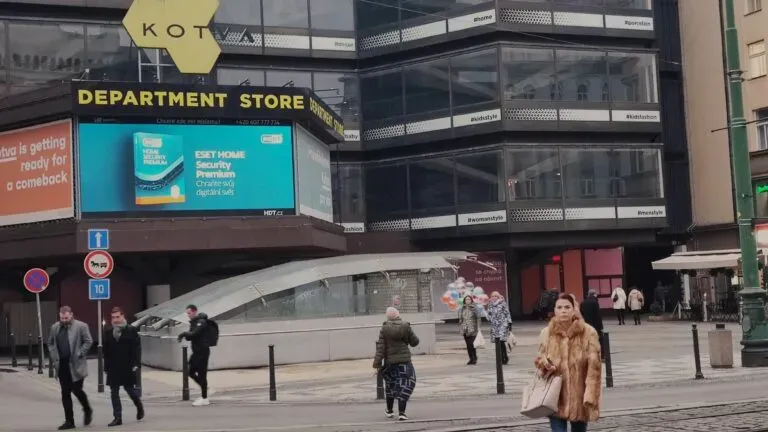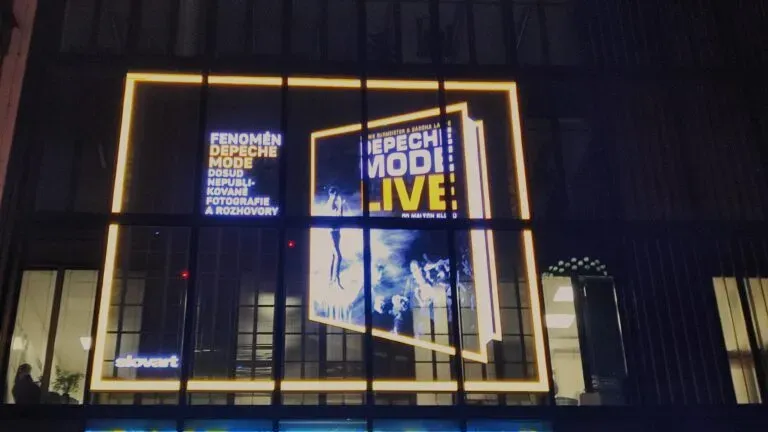11 factors for placing outdoor advertising in cities
Placing outdoor advertising is an important component of comprehensive advertising campaigns aimed at reaching a wide audience.
Due to high population density and heavy traffic in large cities, such advertising ensures significant coverage of potential customers. The use of modern technologies, such as DOOH (Digital Out-of-Home), makes advertising dynamic and effective. Software for video walls, in turn, provides centralized content management, simplifying adjustments and updates.
To use outdoor advertising effectively, it is important to consider legal requirements regulating its placement. For example, a digital signage player ensures compliance with technical standards, guaranteeing clear image and text reproduction. This article explores key aspects, including location selection, costs, and adherence to regulations.
1. Basic rules for placing outdoor advertising
Key rules include maintaining urban aesthetics, adhering to technical standards, and meeting safety regulations. Solutions such as pDOOH (Programmatic Digital Out-of-Home) add flexibility to planning advertising campaigns by considering the target audience and its activity in specific urban areas.
2. Who grants permission for placing outdoor advertising?
Permissions for placing advertising are issued by local authorities or special agencies responsible for urban development. The approval process considers both the location of the advertising object and its technical parameters to ensure the advertising is safe and effective for the public.
3. Restrictions and prohibitions
Legislation also imposes restrictions on placing advertising in certain locations and formats. For example, installing advertising structures near intersections and pedestrian crossings is prohibited to avoid distracting drivers and creating dangerous situations. Additionally, some cities ban job vacancy advertisements on advertising. Modern digital signage helps comply with legal requirements thanks to its interactivity and the ability to quickly change content.
4. Types of advertising
Billboards and hoardings
Placing advertising on billboards is one of the most popular ways to attract attention. Billboards (hoarding structures) are positioned along roads and streets with high traffic, ensuring good visibility for both pedestrians and drivers. A digital signage player allows for the display of video ads, making these structures even more appealing to the audience.
Advertising on facades and buildings
Placing advertising on building facades is an effective promotional method, particularly in central areas of large cities with high concentrations of people and traffic. For example, using DOOH software enables real-time content management, making building facade advertising even more impactful.
Banners and overhead displays
Banners and overhead displays are horizontal advertisements stretched across streets or roads. They effectively capture the attention of both drivers and pedestrians, especially on busy streets. The use of Digital Out-of-Home (DOOH) technologies adds interactivity to these advertising formats, enhancing their effectiveness.
Advertising on transport
Placing advertising on transport, including buses, trams, and the metro, provides a unique opportunity to reach a broad audience. Every day, millions of people use public transport, making this type of advertising particularly attractive. Video ads on digital panels within transport allow companies to quickly adapt content to meet audience needs.
5. Approval process
The approval process for placing advertising involves several steps. Companies planning to install advertising structures must submit documentation, including an application for advertising placement, to the relevant local authorities. After reviewing and approving the application, a permit for advertising placement is issued. When using LED screens, additional technical requirements related to their installation and connection must be taken into account.
6. Cost of outdoor advertising placement
The cost of placing advertising depends on several factors, including location, the size of the structure, and the rental duration of the advertising space. For example, advertising in the city center can be significantly more expensive than in peripheral areas. The use of advertising screens also impacts the cost, as such technologies require higher energy consumption and more complex maintenance.
7. Production and placement of outdoor advertising
The production and placement of advertising is a complex process that includes design development, material selection, and structure installation. For LED screens, it is important to consider the quality of the panels, their resistance to weather conditions, and uninterrupted operation. Software for LED screens helps optimize the display of advertising content and make changes promptly.
8. Concept of outdoor advertising placement
Developing the concept for placing advertising is a key step in creating a successful advertising campaign. The concept must consider the target audience, the location of the structure, the advertising format, and the message to be conveyed. For modern campaigns, it is particularly important to integrate advertising screens that provide bright visuals and capture audience attention. A well-thought-out concept allows for efficient budget use and achievement of set goals.
9. Prohibitions on advertising placement
Ukrainian legislation establishes a range of prohibitions and restrictions on advertising placement. For example, advertising on roads is subject to restrictions on placing billboards and banners in hazardous areas such as intersections, pedestrian crossings, and locations near traffic signs. These rules help reduce accidents and ensure road safety. For DOOH networks, it is especially important to consider these requirements, as interactive screens may distract drivers.
10. Restrictions on format and content
There are also rules governing the placement of advertising related to its formats and content. For example, advertisements must not violate public morality standards or mislead the audience. DOOH Display Solutions are subject to additional requirements regarding the use of bright elements and animations to avoid distracting road users.
11. Tracking the effectiveness of outdoor advertising
Various methods are used to evaluate the effectiveness of advertising placement, including traffic monitoring, sales growth analysis, and geolocation technologies. For instance, a centralized video management system can track the number of people passing by an advertising screen and assess the advertisement’s impact on store visits or the company’s website traffic.
Placing DOOH advertising is a powerful tool for capturing the attention of a wide audience, especially in large cities. However, for a successful advertising campaign, it is essential to consider all aspects—from location selection to compliance with legal requirements and technical standards.
Advision — Content Management System for remote management and media planning of video and audio content broadcast. We help offline businesses and advertising companies automate workflows and implement reliable Digital Signage infrastructure using our own software and hardware solutions.
Contact us and we will help you implement the most modern technologies to solve your problems!
Share the news




















